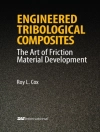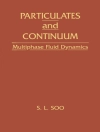This comprehensive, standard work has been updated to remain an important resource for all those needing detailed knowledge of the theory and applications of vacuum technology.
The text covers the existing knowledge on all aspects of vacuum science and technology, ranging from fundamentals to components and operating systems. It features many numerical examples and illustrations to help visualize the theoretical issues, while the chapters are carefully cross-linked and coherent symbols and notations are used throughout the book. The whole is rounded off by a user-friendly appendix of conversion tables, mathematical tools, material related data, overviews of processes and techniques, equipment-related data, national and international standards, guidelines, and much more.
As a result, engineers, technicians, and scientists will be able to develop and work successfully with the equipment and environment found in a vacuum.
Содержание
Preface xxiii
1 The History of Vacuum Science and Vacuum Technology 1
References 16
Further Reading 17
2 Applications and Scope of Vacuum Technology 19
References 27
3 Gas Laws and Kinetic Theory of Gases 29
3.1 Description of the Gas State 29
3.2 Kinetic Theory of Gases 38
3.3 Transport Properties of Gases 50
3.4 Real Gases 65
3.5 Vapors 75
References 81
Comprehensive general treatments of the subject 82
4 Gas Flow 83
4.1 Types of Flows and Definitions 83
4.2 Inviscid Viscous Flow and Gas Dynamics 93
4.3 Frictional–Viscous Flow through a Tube 114
4.4 Molecular Flow under High-Vacuum and Ultrahigh-Vacuum Conditions 131
4.5 Flow throughout the Entire Pressure Range 151
4.6 Flow with Temperature Difference, Thermal Effusion, and Transpiration 158
4.7 Measuring Flow Conductances 162
References 166
Further Reading 166
5 Analytical and Numerical Calculations of Rarefied Gas Flows 167
5.1 Main Concepts 167
5.2 Methods of Calculations of Gas Flows 178
5.3 Velocity Slip and Temperature Jump Phenomena 181
5.4 Momentum and Heat Transfer Through Rarefied Gases 185
5.5 Flows Through Long Pipes 199
5.6 Flow Through an Orifice 218
5.7 Modeling of Holweck Pump 221
5.8 Appendix A 223
References 225
6 Sorption and Diffusion 229
6.1 Sorption Phenomena and the Consequences, Definitions, and Terminology 229
6.2 Adsorption and Desorption Kinetics 234
6.3 Absorption, Diffusion, and Outgassing 247
6.4 Permeation 254
References 256
Further Reading 256
7 Positive Displacement Pumps 259
7.1 Introduction and Overview 259
7.2 Oscillating Positive Displacement Pumps 262
7.3 Single-Shaft Rotating Positive Displacement Pumps 276
7.4 Twin-Spool Rotating Positive Displacement Pumps 305
7.5 Specific Properties of Oil-Sealed Positive Displacement Pumps 331
7.6 Basics of Positive Displacement Pumps 337
7.7 Operating and Safety Recommendations 345
7.8 Specific Accessories for Positive Displacement Pumps 350
References 356
Further Reading on Positive Displacement Pumps 359
8 Condensers 361
8.1 Condensation Processes Under Vacuum 361
8.2 Condenser Designs 370
8.3 Integrating Condensers into Vacuum Systems 376
8.4 Calculation Examples 380
References 382
9 Jet and Diffusion Pumps 383
9.1 Introduction and Overview 383
9.2 Liquid Jet Vacuum Pumps 385
9.3 Steam Jet Vacuum Pumps 387
9.4 Diffusion Pumps 396
9.5 Diffusion Pumps Versus Vapor Jet Pumps 415
References 417
10 Molecular and Turbomolecular Pumps 419
10.1 Introduction 419
10.2 Molecular Pumps 421
10.3 Molecular and Regenerative Drag Pump Combination 427
10.4 Physical Fundamentals of Turbomolecular Pump Stages 430
10.5 Turbomolecular Pumps 439
10.6 Performance Characteristics of Turbomolecular Pumps 450
10.7 Operation and Maintenance of Turbomolecular Pumps 455
10.8 Applications 457
References 460
11 Sorption Pumps 463
11.1 Introduction 463
11.2 Adsorption Pumps 464
11.3 Getter 472
11.4 Ion Getter Pumps 493
11.5 Orbitron Pumps 507
References 508
Further Reading 509
12 Cryotechnology and Cryopumps 511
12.1 Introduction 511
12.2 Methods of Refrigeration 512
12.3 Working Principles of Cryopumps 520
12.4 Design of Cryopumps 531
12.5 Characteristics of a Cryopump 547
12.6 Application Examples 555
References 562
13 Total Pressure Vacuum Gauges 565
13.1 Introduction 565
13.2 Mechanical Vacuum Gauges 566
13.3 Spinning Rotor Gauges (Gas-Friction Vacuum Gauges) 584
13.4 Direct Electric Pressure Measuring Transducers 593
13.5 Thermal Conductivity Vacuum Gauges 594
13.6 Thermal Mass Flowmeters 604
13.7 Ionization Gauges 607
13.8 Combined Vacuum Gauges 637
References 639
14 Partial Pressure Vacuum Gauges and Leak Detectors 643
14.1 Introduction 643
14.2 Partial Pressure Analysis by Mass Spectrometry 643
14.3 Partial Pressure Measurement Using Optical Methods 672
14.4 Leak Detectors 675
References 692
15 Calibrations and Standards 697
15.1 Introduction 697
15.2 Calibration of Vacuum Gauges 700
15.3 Calibrations of Residual Gas Analyzers 733
15.4 Calibration of Test Leaks 735
15.5 Standards for Determining Characteristics of Vacuum Pumps 738
References 742
16 Materials 747
16.1 Requirements and Overview of Materials 747
16.2 Materials for Vacuum Technology 749
16.3 Gas Permeability and Gas Emissions of Materials 763
References 774
Further Reading 775
17 Vacuum Components, Seals, and Joints 777
17.1 Introduction 777
17.2 Vacuum Hygiene 778
17.3 Joining Technologies in Vacuum Technology 781
17.4 Components 806
Abbreviations 839
References 840
18 Operating Vacuum Systems 843
18.1 Electronic Integration of Vacuum Systems 843
18.2 Calculation of Vacuum Systems 851
18.3 Pressure Control 859
18.4 Techniques for Operating Low-Vacuum Systems 860
18.5 Techniques for Operating Fine-Vacuum Systems 870
18.6 Techniques for Operating High-Vacuum Systems 879
18.7 Techniques for Operating Ultrahigh-Vacuum Systems 892
References 904
19 Methods of Leak Detection 907
19.1 Overview 907
19.2 Properties of Leaks 912
19.3 Overview of Leak-Detection Methods (See Also DIN EN 1779) 918
19.4 Leak Detection Using Helium Leak Detectors 925
19.5 Leak Detection with Other Tracer Gases 936
19.6 Industrial Tightness Testing of Mass-Production Components 937
References 942
Further Reading 942
Appendix 943
Index 1003
Directory of Products and Suppliers 1023
Об авторе
Karl Jousten is head of the section Vacuum Metrology at the Physikalisch-Technische Bundesanstalt (PTB), the German National Institute for Metrology. He obtained his masters and Ph.D. degree in physics from the University of Heidelberg. After working as a post-doc at the Max-Planck-Institute for Nuclear Physics in Heidelberg, at the Oregon Graduate Institute of Science and Technology in the United States, and finally at the Fritz-Haber-Institute in Berlin, he joined the vacuum group at PTB in Berlin in 1990 that he leads since 1992. He has authored many scientific articles in the field as well as contributions to textbooks and edits the German edition of this book, ‘Wutz Handbuch Vakuumtechnik’. He is active in the field of national (DIN) and international (ISO) standardization in vacuum technology. From 2005 to 2008, Karl Jousten has served as President of the German Vacuum Society. Since 2005 he chairs the international working group for low and very low pressures of the respective committee (CCM) of the Meter Convention.












